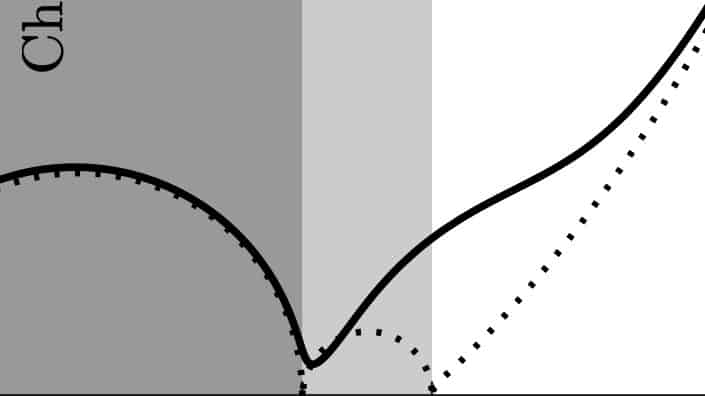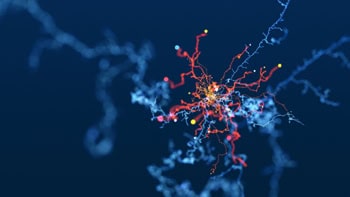

Join the audience for a live webinar at 3 p.m. GMT/10 a.m. EST on 21 January 2026
Discover the role of impedance analysis in advancing battery-model development

The BCTVNet neural network provides accurate and rapid target volume delineation for cervical cancer brachytherapy
New calculation of viral spread suggests that rapid elimination of SARS-CoV-2-like viruses is scientifically feasible, though social challenges remain
Result boosts our understanding of the Navier-Stokes equation
New form of quantum advantage emerges from study of game theory and quantum information
New algorithm turns structured motion into sharper images
Predictive model accelerates the development of nanoparticles as potential drug carriers for targeting neurodegenerative diseases
New work could help improve quantum machine learning and quantum error correction
Can you make an impact through peer review?
Join more than 15,000 researchers who have achieved IOP Trusted Reviewer status – Tell me more

Test your knowledge of the deep connections between physics, big data and AI
 Read article: How well do you know AI? Try our interactive quiz to find out
Read article: How well do you know AI? Try our interactive quiz to find out
The editors-in-chief of IOP Publishing’s machine learning series share their views
 Read article: Physicists discuss the future of machine learning and artificial intelligence
Read article: Physicists discuss the future of machine learning and artificial intelligence
Iulia Georgescu highlights the forgotten pioneers of computational physics and calls for a wider appreciation of research software engineers
 Read article: The forgotten pioneers of computational physics
Read article: The forgotten pioneers of computational physics
We explore how new computing technologies could guide future LHC experiments
 Read article: Quantum computing and AI join forces for particle physics
Read article: Quantum computing and AI join forces for particle physics
How do we create a digital version of the vellum and clay tablets that successfully preserved information in earlier ages of human history?
 Read article: ‘Father of the Internet’ Vint Cerf expresses concern about the longevity of digital information
Read article: ‘Father of the Internet’ Vint Cerf expresses concern about the longevity of digital information
Global survey of reviewers reveals a growing polarization about the use of AI
 Read article: Peer review in the age of artificial intelligence
Read article: Peer review in the age of artificial intelligence
David Silver of Google DeepMind thinks AIs that ‘learn by experience’ are the future of AI – but maybe not in particle colliders or nuclear arsenals
 Read article: The pros and cons of reinforcement learning in physical science
Read article: The pros and cons of reinforcement learning in physical science
Some highly intelligent human mathematicians certainly seem to think so, as Margaret Harris reports from the maths-and-computer-science-focused Heidelberg Laureate...
 Read article: Are we heading for a future of superintelligent AI mathematicians?
Read article: Are we heading for a future of superintelligent AI mathematicians?
Calculations reveal inverse square law behaviour in binary black holes
 Read article: Reformulation of general relativity brings it closer to Newtonian physics
Read article: Reformulation of general relativity brings it closer to Newtonian physics
This podcast explains what happens when 66,000 research papers are used as training data
 Read article: Artificial intelligence predicts future directions in quantum science
Read article: Artificial intelligence predicts future directions in quantum science
Curiosity, problem-solving and resilience are the key qualities for a career in intelligence
 Read article: From ‘rewarding and exciting’ to ‘challenging and overwhelming’: what it means to have a career in intelligence and cyber security
Read article: From ‘rewarding and exciting’ to ‘challenging and overwhelming’: what it means to have a career in intelligence and cyber security
Simulations of improved technique generate fields as strong as those found near neutron stars
 Read article: Laser-driven implosion could produce megatesla magnetic fields
Read article: Laser-driven implosion could produce megatesla magnetic fields
Discovery could lift theoretical constraints on calculations achievable with certain types of topological quantum computers
 Read article: Predicted quasiparticles called ‘neglectons’ hold promise for robust, universal quantum computing
Read article: Predicted quasiparticles called ‘neglectons’ hold promise for robust, universal quantum computing
Otto engine design uses Bose gas as a working fluid and exchanges particles as well as heat with reservoirs
 Read article: Quantum thermochemical engine could achieve high power with near-maximum efficiency
Read article: Quantum thermochemical engine could achieve high power with near-maximum efficiency
AI model analyses electrocardiogram traces to flag patients at high risk of structural heart disease
 Read article: Deep-learning model outperforms cardiologists in identifying hidden heart disease
Read article: Deep-learning model outperforms cardiologists in identifying hidden heart disease
Monte Carlo method combines billions of diagrams related to polarons
 Read article: Feynman diagrams provide insight into quasiparticles in solids
Read article: Feynman diagrams provide insight into quasiparticles in solids
Tara Shears discusses how the fields of AI and physics could help advance each other
 Read article: How AI can help (and hopefully not hinder) physics
Read article: How AI can help (and hopefully not hinder) physics
Optical microscopy technique shows promise for diagnostics
 Read article: Deep learning classifies tissue for precision medicine
Read article: Deep learning classifies tissue for precision medicine